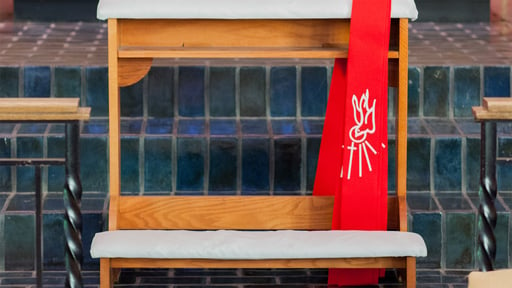Today we commemorate Ignatius of Antioch, both a pastor and martyr, who wrote many epistles during his last days. We take our devotional reading today from Reconciliation and Justification by Theodore Dierks.
Devotional Reading
We turn to the second of the so-called subapostolic Fathers, to Ignatius, who was bishop of Antioch at the close of the first and the beginning of the second century, therefore a contemporary of Clement of Rome. Beyond the bare fact that he was a bishop—tradition has it that he was the second of the Antiochene bishops or (if St. Peter be reckoned) the third—we know nothing of this life prior to this last journey, to which his letters belong. Ignatius had been condemned to death and was to be thrown to the wild beasts in the Roman arena. Under the guard of ten soldiers he was taken overland from Antioch to Philadelphia and then to Smyrna.
When he arrived at Smyrna, he was hospitably received by Polycarp and the Smyrnaean Church and was also met by delegates from the neighboring congregations at Ephesus, Magnesia, and Tralles. Here in Smyrna, Ignatius wrote four letters: three addressed to the congregations which had sent delegates to meet him at Smyrna and the fourth addressed to the Church in Rome.
From Smyrna, Ignatius was taken to Troas, and then from there he wrote a letter to the church at Smyrna, another letter to the church at Philadelphia, and a third addressed to Polycarp, bishop of Smyrna. From Troas, Ignatius was taken to Philippi, and at his request the church at Philippi sent a letter to the church of Antioch. The Philippian church sent the same messenger who would carry the letter of the Smyrnaean church to Antioch.
At the same time the Philippians requested Polycarp to send them a copy of the letter which he had received from Ignatius and also any other letter of Ignatius which he might possess. “It is not improbably to this circumstance that we owe the preservation of the seven letters of Ignatius.” [J. B. Lightfoot, The Apostolic Fathers, Part II, Vol. I]. Concerning the further life-story of Ignatius history is silent; but tradition has it that Ignatius really fell a victim to the wild beasts in the Roman arena and that he there obtained the martyr’s crown.
The date of these letters cannot be precisely fixed. Lightfoot places them within a few years of 110 A.D. before or after. With this date most scholars agree. But of these letters there are three recensions, the long recension, the short recension, and the Syriac abridgment. That gave rise to a great controversy, now happily settled mainly due to the labors of Lightfoot, and today most scholars accept the shorter form of the Ignatian letters.
The purpose of all these letters of Ignatius, except that sent to Rome, was not merely to show his appreciation of the kindness received, but also to strengthen these churches in their faith and to warn them against errorists.
Devotional reading adapted from Reconciliation and Justification by Theodore Dierks, pages 77–78 Copyright © 1998 Concordia Publishing House. All rights reserved.






.jpg?width=50&height=50&name=IMG_20220621_160541_456%20(1).jpg)






